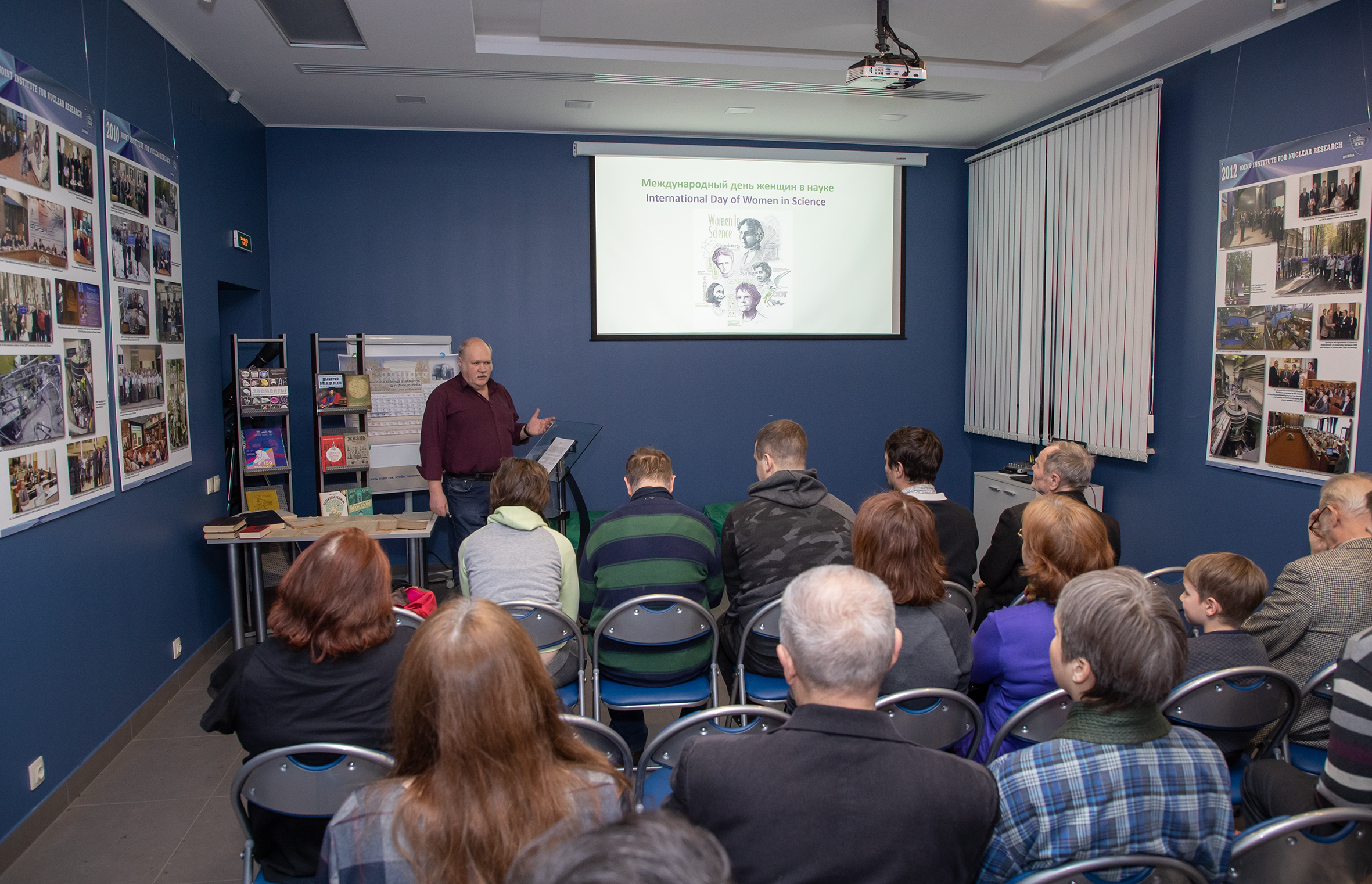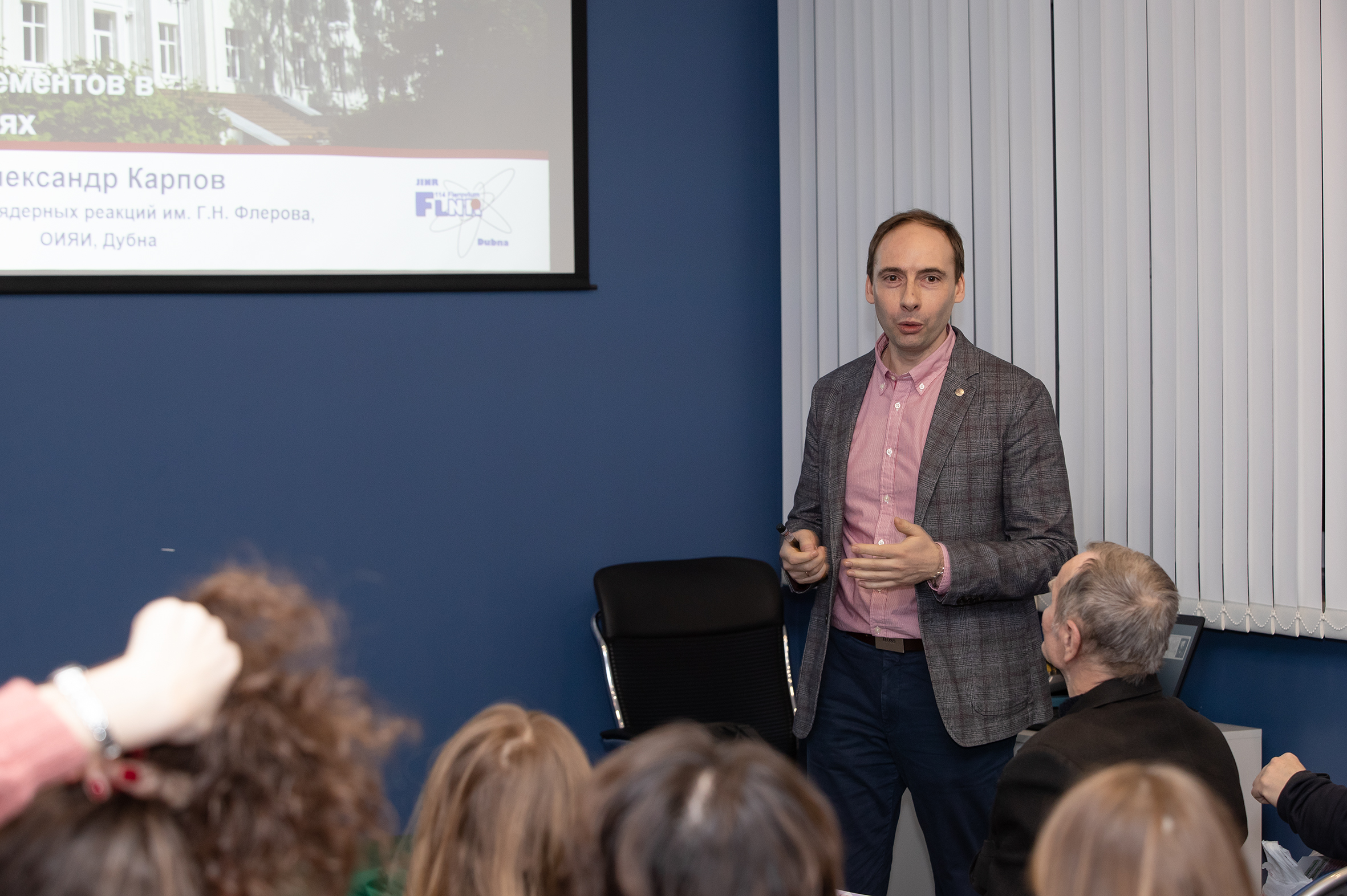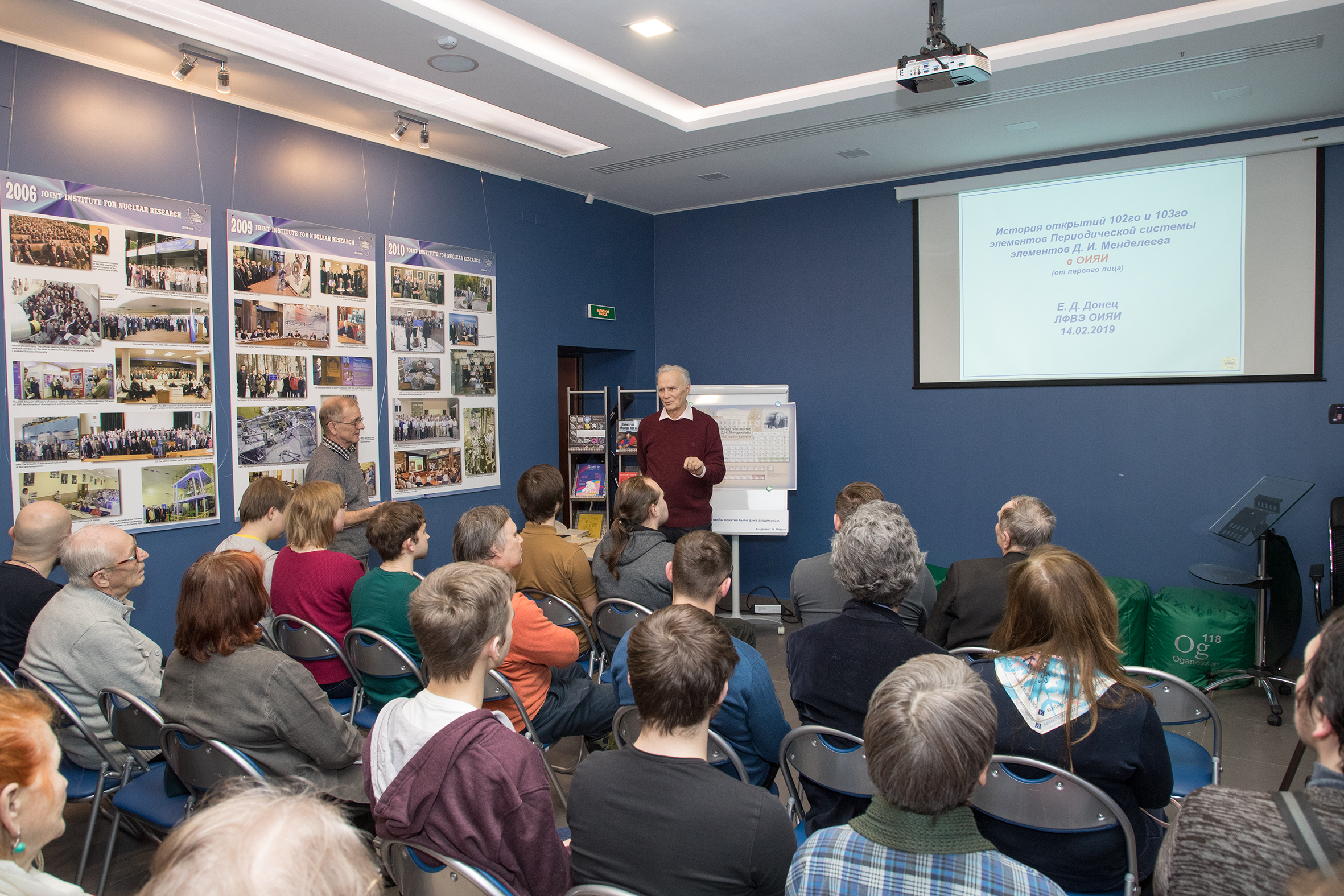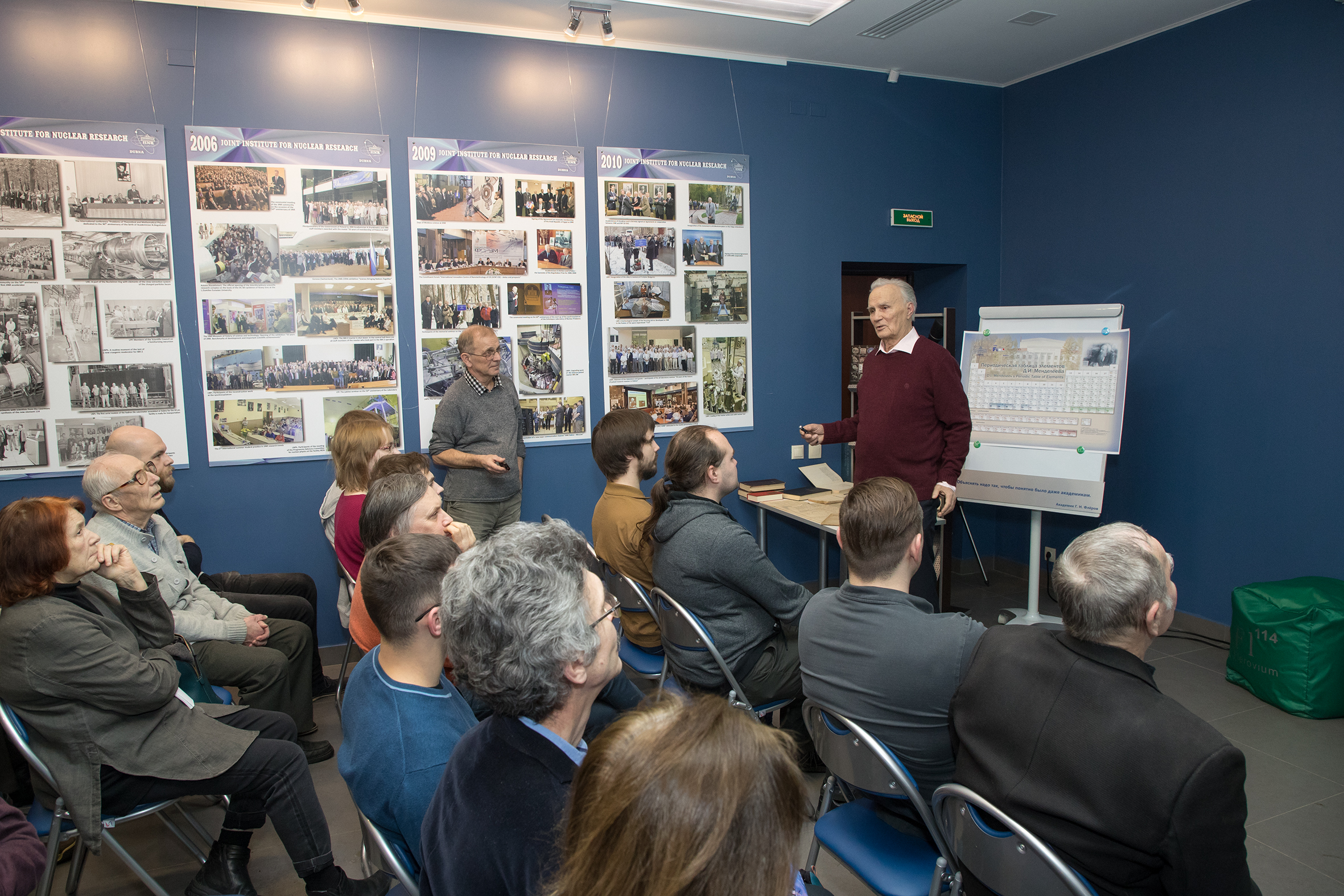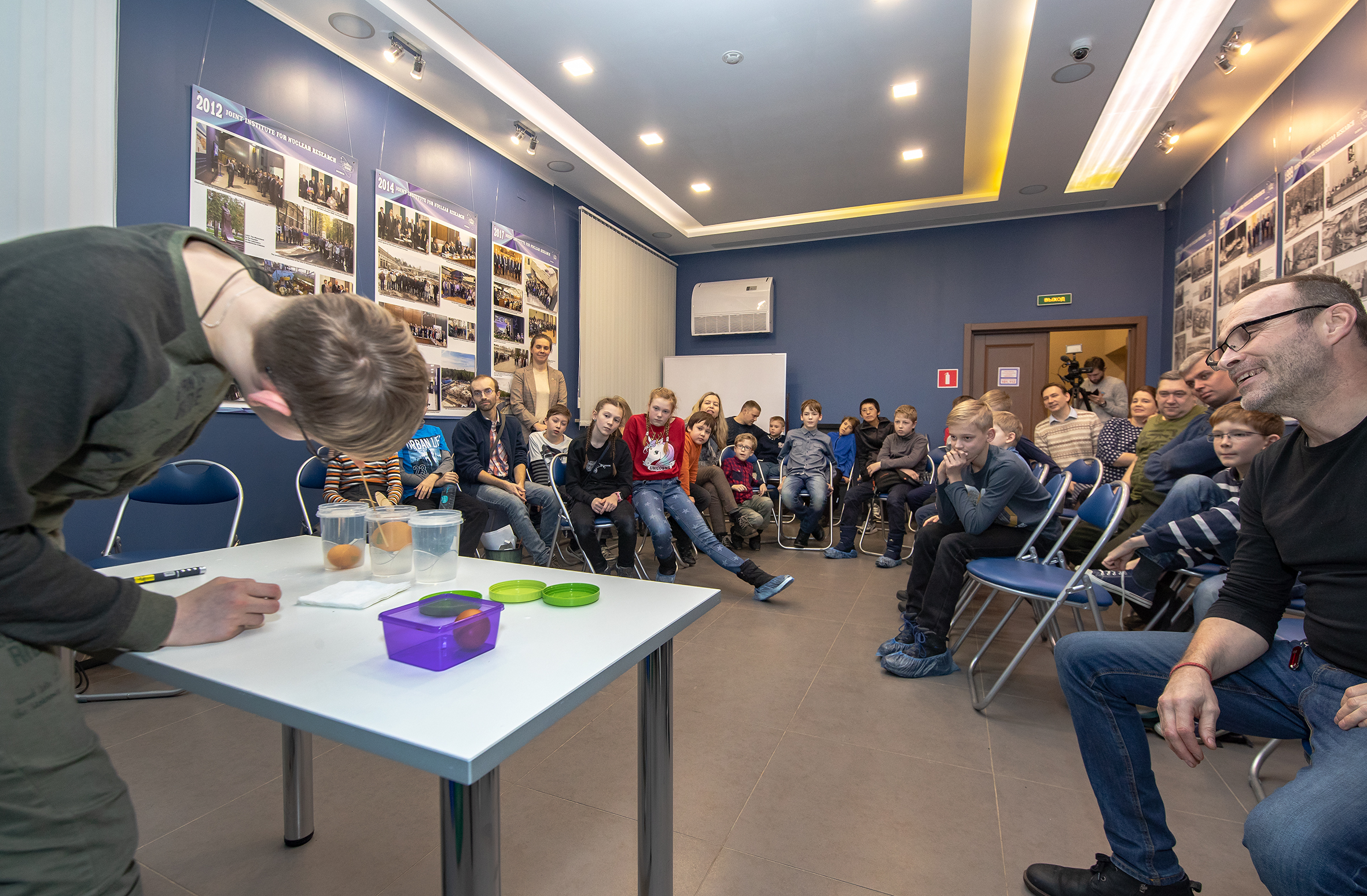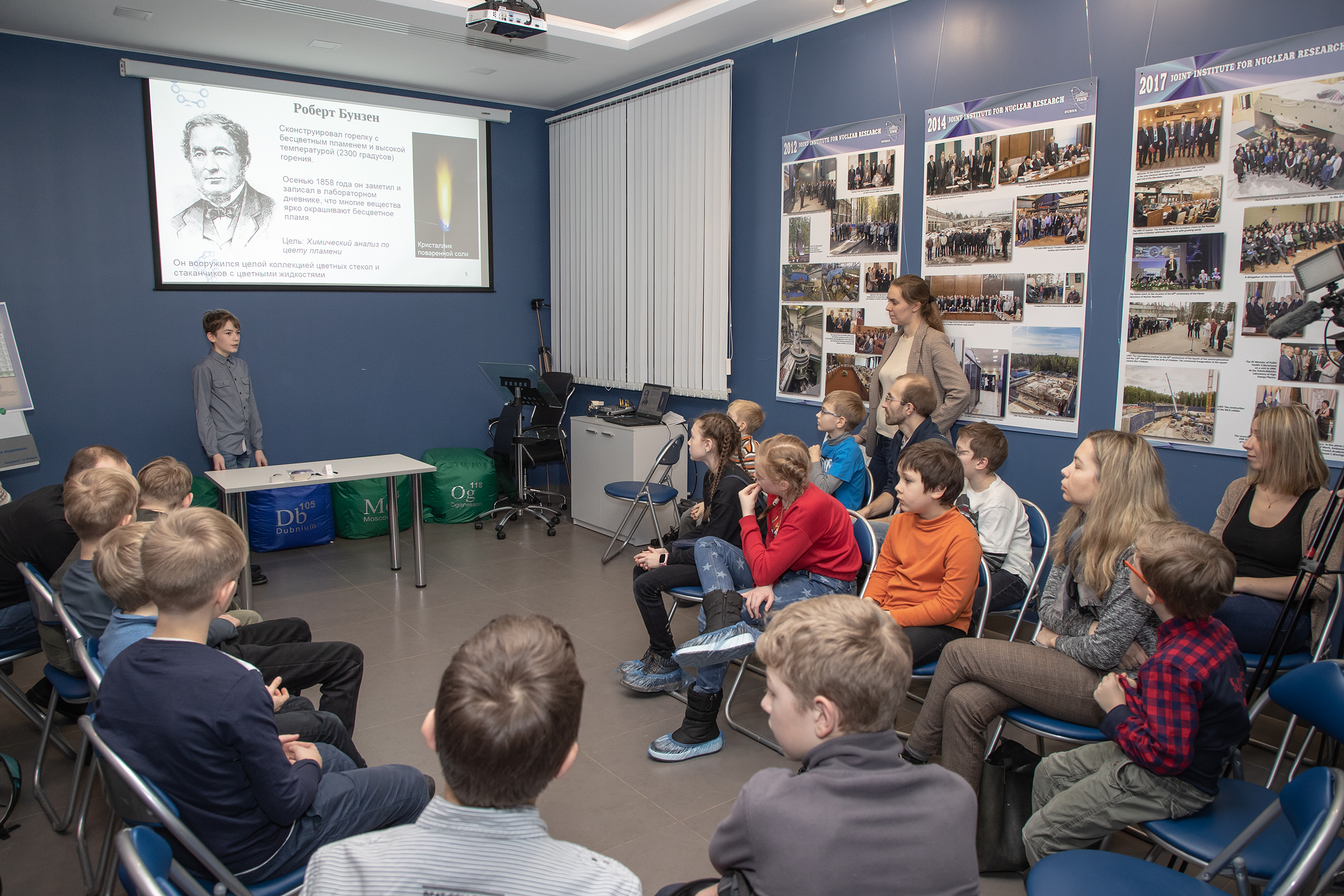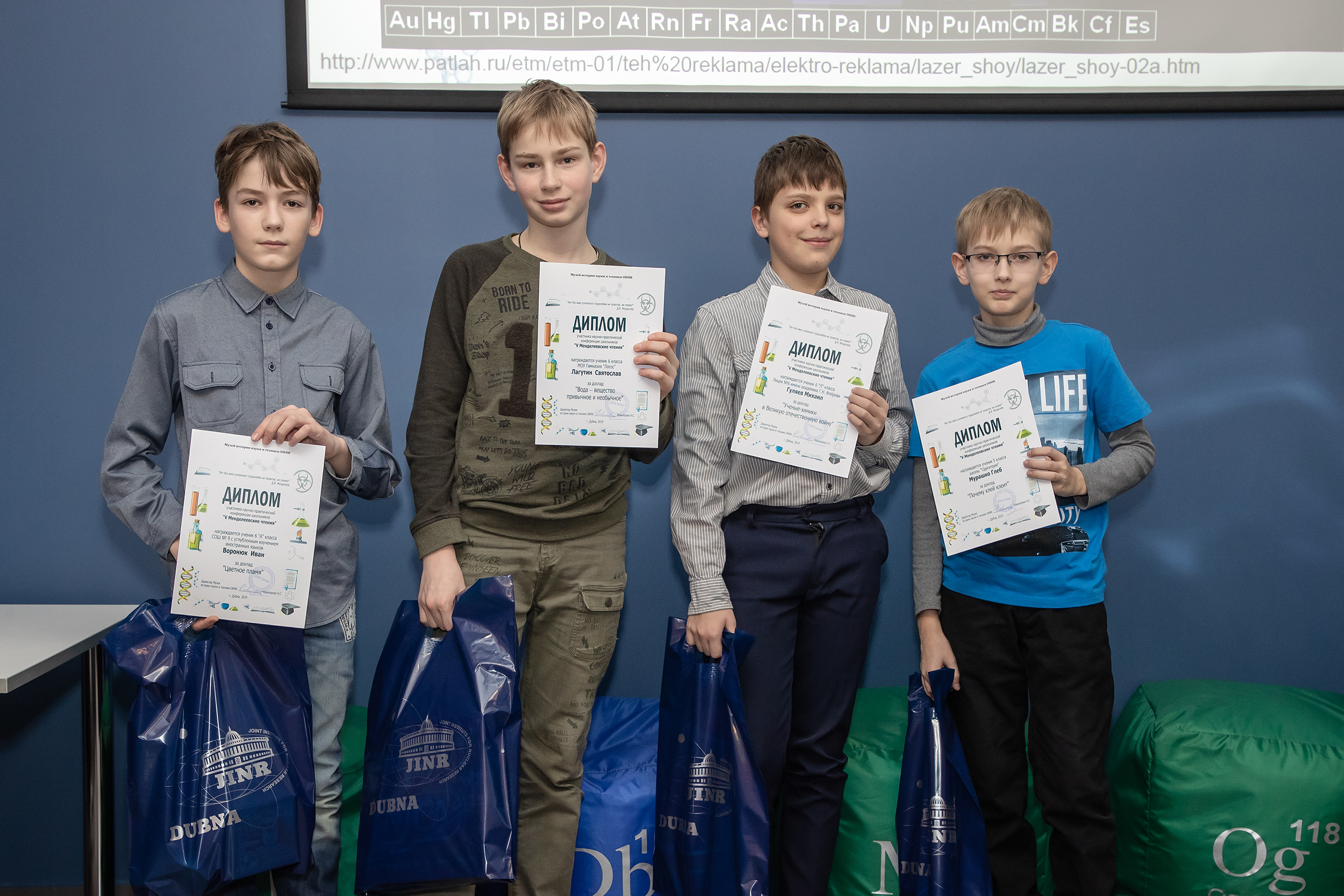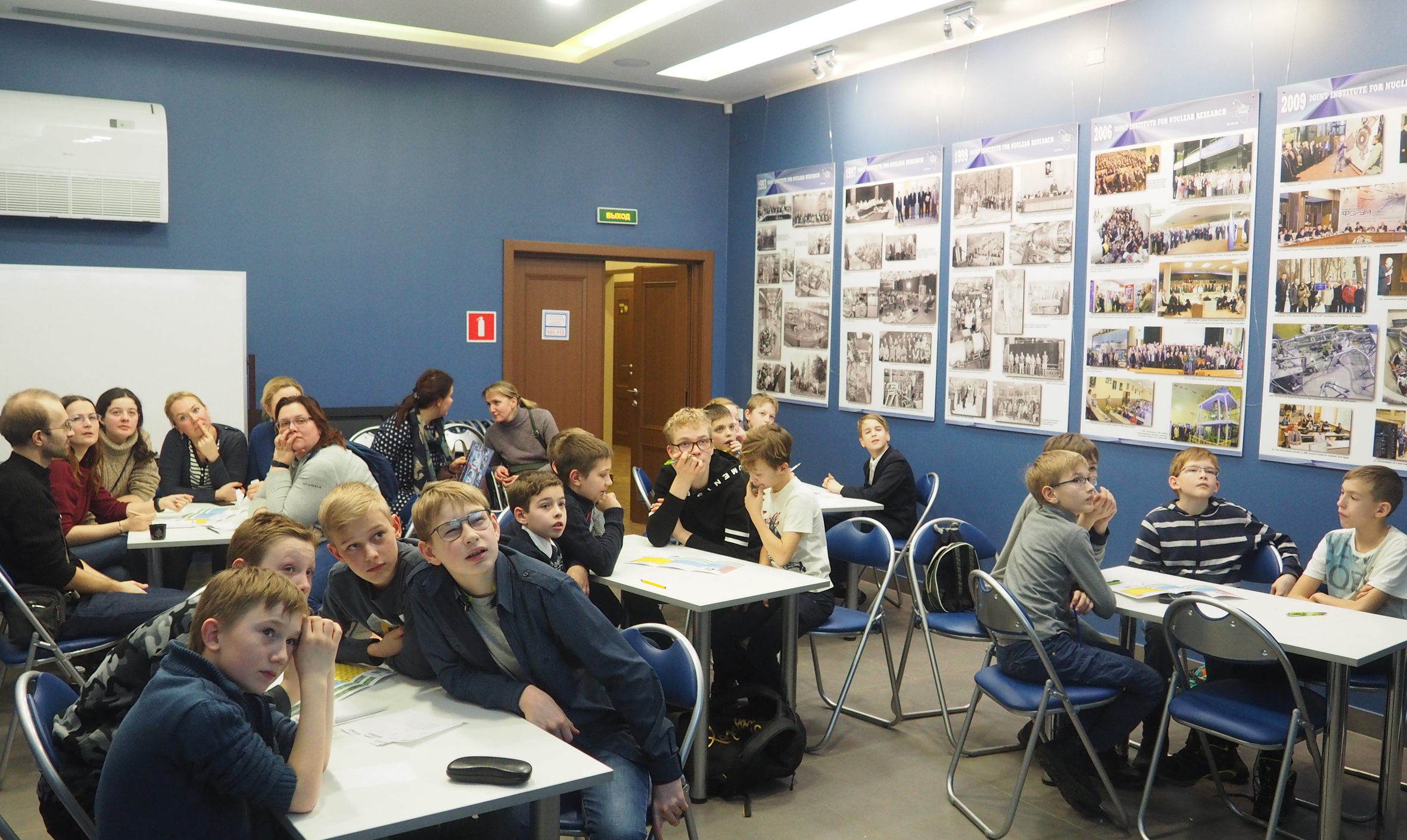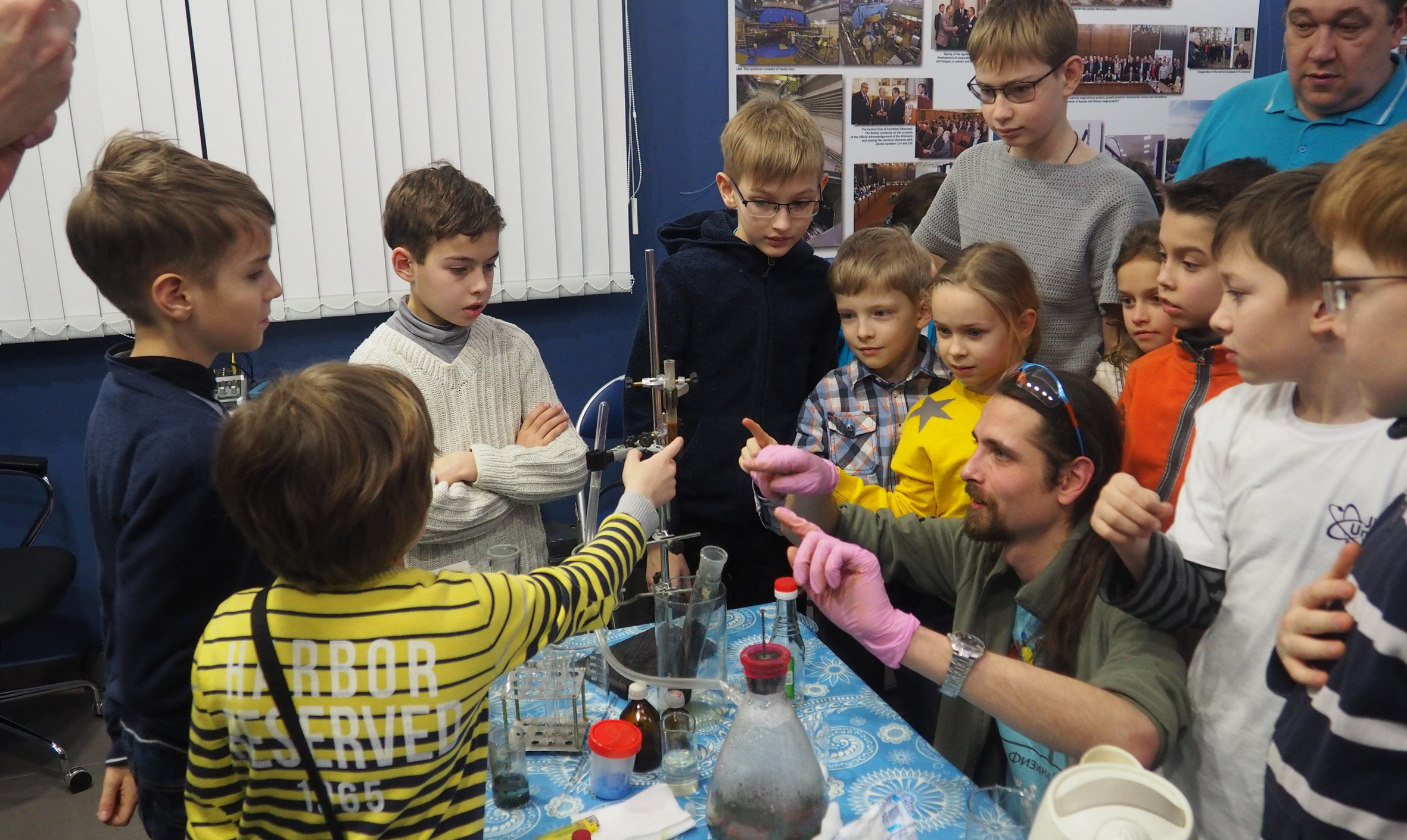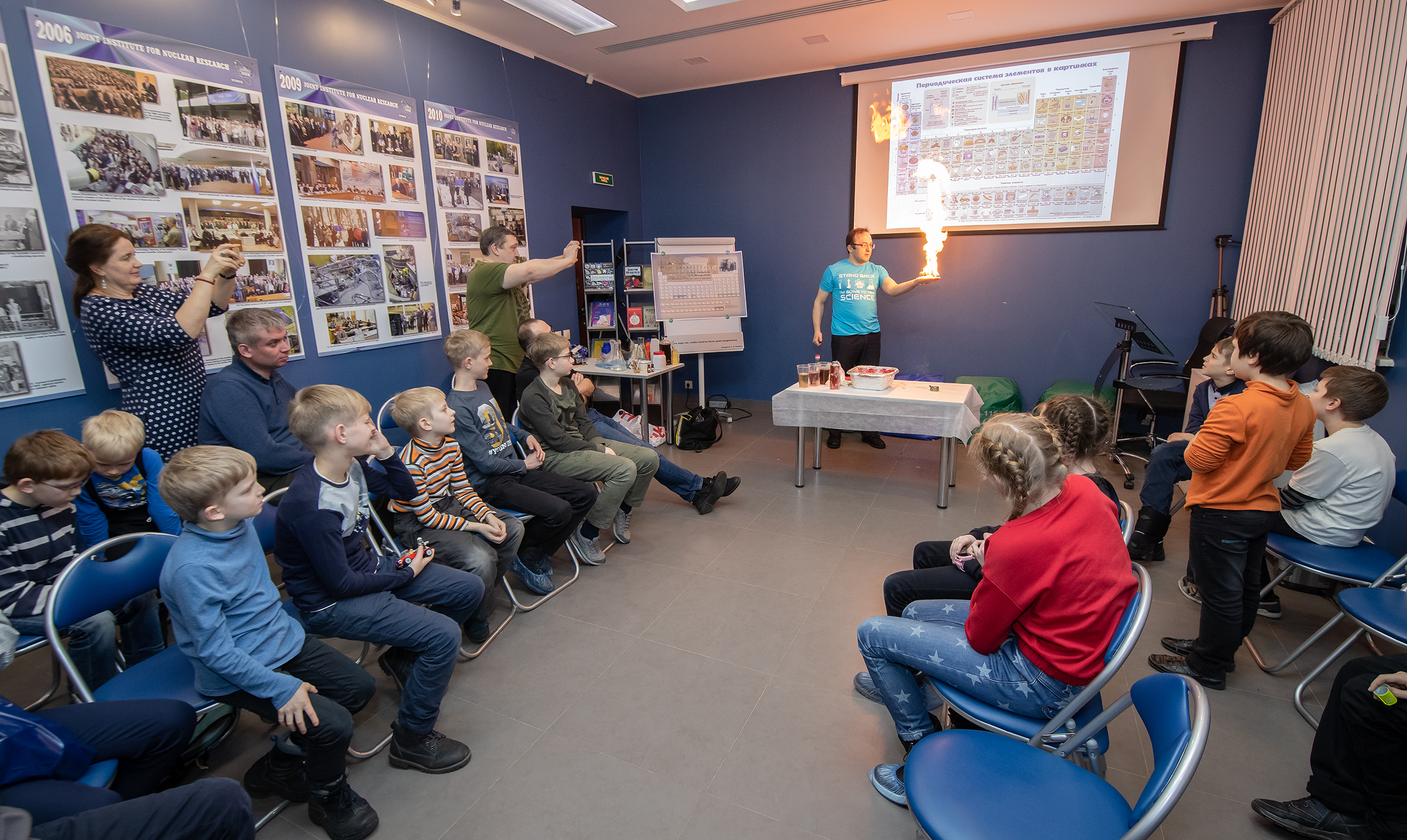Mendeleev readings in the JINR Museum
Education, 11 March 2019
In February – March 2019, the Museum of History of Science and Technology of JINR held the Mendeleev readings. It is commonly known that our Museum organizes the Mendeleev readings for the fifth time. The idea emerged in 2009 when the 175th anniversary of the birth of D.I. Mendeleev was celebrated. A teacher of the Dubna distance learning centre of I.V. Glagoleva was an initiator of the first readings in the Museum. Traditions established in the first years are now intensified and developed. The readings 2019 became especially fruitful as far as the event was dedicated to the 150th anniversary of the periodic system of chemical elements.
The programme of the event was diverse and included lectures, scientific reports, demonstrations of chemical experiments, intellectual games. A general background of the scientific and enlightenment programme was the Mendeleev book exhibition where books on chemistry, mineralogy, petrography, as well as antique issues of Mendeleev’s scientific papers were demonstrated.
JINR staff members delivered four lectures in February all of which touched upon D.I. Mendeleev and his many-sided heritage to a certain extent.
A.A. Rastorguev was the first to deliver the lecture “Life of great ideas – from “elements” of Democritus to the Mendeleev’s Periodic Table”. The lecturer made a detailed historical overview of the most significant atomistic studies starting from ancient times.
On 11 February, humanity celebrates the International Day of Women in Science. On this day, K.E. Kozubsky performed with the lecture “Women in Science”. The lecturer paid special attention to biographies of Marie Skłodowska Curie, Ida Noddack and Lise Meitner who, as known, extended the horizons of science in general and the Mendeleev’s Table in particular. He also reported on outstanding female scientists of JINR and their scientific achievements.
The next lecture “Synthesis of chemical elements in nature and laboratories” was delivered by FLNR Scientific Secretary, Doctor of Physics and Mathematics A.V. Karpov. The lecturer in a simple but strictly scientific way answered complicated questions: how did chemical elements emerge? How are new elements produced? What unique experiments are carried out for it? What is it needed for? How do elements get their names (dubnium, oganesson etc.)? Is there a limit of the Mendeleev’s Table?
Then, the lecture “History of discovery in first person: synthesis of elements 102 and 103 of the Mendeleev’s Table” that had been planned long ago took place. It was delivered by JINR veteran, Doctor of Physical and Mathematical Sciences E.D. Donets. Being a co-author of these discoveries, the lecturer shared numerous valuable details and highlighted the leading role of FLNR JINR in the international collaboration on search for superheavy elements. It was a full house!
Two biographical films about Mendeleev and the “Synthesis of element 102” documentary were demonstrated to the listeners of the lectures.
The Scientific and Practical Conference for schoolchildren held in the frames of the Mendeleev Readings was opened with the lecture “The wonderful Periodic Table of chemical elements” by A.E. Zlotnikova. The lecturer reported in the unique personality of D.I. Mendeleev and unique facts “hidden” in charts of the Table… Eight school students of 4-8 grades made reports on chemical topics: “Is Coca-Cola harmful? Myths and reality”, “Coloured flame”, “Why does glue stick?” and others. All reporters got commemorative diplomas, souvenirs with the JINR symbolics and sets for chemical experiments. A vivid excitement of the young audience was caused by spectacular chemical experiments demonstrated by JINR staff members Vadim Skoy and Dmitry Dryablov.
In the way of conclusion of the Mendeleev Readings, the Museum organized two intellectual games. The quiz “Wonderful chemistry” for school students that would be long remembered for its spirit of sports passion and involvement of all five teams (four children teams and one parents’). The “Elements” brain-ring for adults was also extremely exciting. It was devoted to mysterious facts about the Periodic Table.
A wide and diverse programme of the Mendeleev Readings fit the interests of all participants. The lecture hall was full at all events. The Mendeleev Readings in the Museum became a holiday of knowledge; it was bright, emotional and memorable.
